Say Thai like a professional: 50 essential expressions for your vacation!
Discover 50 useful Thai expressions for travelers. Learn the pronunciation, courtesy forms and important phrases for everyday life, food, shopping and emergencies. Improve your language skills and experience Thailand authentically.

Say Thai like a professional: 50 essential expressions for your vacation!
The Thai language, also known as Siamese, is a fascinating and melodic language that opens a door for travelers to Thailand to deeper cultural experiences. With their five pitches, Thai can have a challenge at first glance, but learning some fundamental expressions can make a big difference. A friendly "Sawasdee" to greet or a polite "Khob Khun" as a thank you shows respect and often brings a smile on the faces of the locals. This article leads you through 50 useful phrases that help you find your way around in everyday life - be it when ordering food, having haggling in markets or asking for the way. Immerse yourself in the world of Thai language and discover how small words can create big connections.
Introduction to the Thai language

Imagine you walk through the busy streets of Bangkok, surrounded by a sound carpet of gentle syllables and unusual melodies. What you hear is Thai, the official language of Thailand, which, with around 20.8 million native speakers and another 40 million second speakers, forms the heart of communication in this country. As part of the Tai-Kadai language family, it bears a cultural depth that goes far beyond mere words. For travelers, understanding this language not only offers practical advantages, but also a key to find out the soul of Thai society.
A striking feature of Thai is its nature as a tonal language. With five different sounds, a single word can take on completely different meanings depending on how it is pronounced. This musical component may seem unusual at first, but it gives the language a special liveliness. Equally fascinating is the Thai script, an abugida, which opens up its own world of aesthetics with its curved characters and 44 consonants and 32 vowels. Anyone who gets involved will quickly discover that there is a story behind every symbol.
The structure of Thai differs significantly from many European languages. Without flexions, articles or classic plural forms, it relies on an insulating grammar in which the context and special particles specify the meaning. Sentences usually follow the order of subject predicate object, while time forms are often illustrated by the context or additional words. The so -called classifiers, counting words that are indispensable when naming quantities are particularly striking. These peculiarities make Thai an exciting puzzle for voice enthusiasts.
Another aspect that makes Thai so unique is the way social hierarchies are reflected in the language. With at least five language levels - from everyday colloquial language to sophisticated written language to court language or the special monk language - the choice of words always adapts to the social context. Understanding these nuances requires sensitivity, but just being aware of them opens doors to respectful communication. The standard language, based on Central Thai from Bangkok, dominates education and media, while regional dialects such as Isan in the northeast or Northern Thai (Lanna) are used primarily orally.
In addition to the standard shark, minority languages also shape the linguistic picture of Thailand. In the southern provinces near Malaysia you hear Malay, while Khmer is widespread in the eastern border regions. Chinese echoes through the urban centers such as Bangkok and Chiang Mai, and in some areas the Laotian languages of the northeastern still sound. This diversity shows how narrow language is interwoven with history and identity. For travelers, it can be enriching to perceive these differences, even if Standardthai is usually sufficient to make themselves understandable.
The importance of Thai goes beyond everyday life-it is an inheritance that has served as Lingua Franca for trade and diplomacy since the Ayutthaya period. Today it remains the backbone of public life, from government documents to school books. At the same time, foreign languages such as English, which plays a central role in tourism and education, are increasingly gaining ground. Chinese, Japanese or even German also find their place, driven by economic and cultural connections. If you want to learn more about Thai's roots and subtleties, you will find valuable insights on pages like Wikipedia on the Thai language.
For visitors to Thailand, learning some fundamental expressions is more than just a practical help. It shows respect for culture and builds bridges to the local people. Even if the tones and the writing initially seem strange, an attempt to deal with this language is worthwhile. Every pronounced sentence, every syllable understood brings you a little closer to the pulsating world of Thailand.
Basics of Thai pronunciation

Listen exactly when someone speaks in Thailand - it is as if a melody would dance through the air. This musical quality of the Thai language moves from its tonality, a characteristic that is unusual for many newbies but absolutely fascinating. With five different tones, a single word can take a completely different meaning depending on the sound height or course. For travelers who want to get involved in the first talks, the understanding of these tones forms the basis for avoiding misunderstandings and expressing themselves.
The five tones in Thai can be described as a medium, deeper, high, increasing and falling tone. A word like "Maa" can, for example, "come", "dog" or "horse", depending on how the voice is modulated. The middle tone remains neutral, while the deep sound has a darker, heavier sound color. A high tone sounds sharp and clear, the rising sound ultimately rises like a question, and the falling tone sinks abruptly, almost like a certain command. Mastering these differences requires patience and a good ear, but awareness helps to better grasp the language.
In addition to the tones, the pronunciation of the vowels also plays a central role. There are 29 vowels in Thai, some of which occur in combinations and can generate different meanings. The length of a vowel is also crucial - a short or long sound can completely change the meaning of a word. Short vowels are often marked with an apostrophe when they are transcribed, but in the spoken language you can recognize them by their short, abrupt way. If you want to deal with this aspect, you will find helpful details on pages like Ling app for Thai vowels.
Another element that deserves attention are the consonants and their specific sounds. With 44 consonants, the Thai offers a wide range of sounds, from soft, breathed tones to hard, clear speeches. Some consonants have no direct equivalent in western languages, which can make imitations difficult. The so -called aspirated sounds are particularly tricky, in which a hint of air is associated with the consonant - a difference that is immediately noticeable for Thai ears, even if it is hardly perceptible to inexperienced.
The position of vowels in relation to consonants is also a point that requires attention. In the Thai script, vowels can stand after or below a consonant, which influences the pronunciation. A special sign, "อ", serves as a vowel and as a consonant and is often used as a placeholder if there is no other consonant. This versatility shows how dynamically the language is in its structure and explains why regular practice remains so important to internalize the subtleties.
For travelers who are just starting, the focus on tonality and pronunciation may have an overwhelming effect. But it is worth starting small and concentrating on the most common words in which the tones play a role. A good tip is to imitate native speakers - be it through talks on site or through hearing exercises. Many Thai people appreciate the attempt to speak their language and are patient when it comes to corrections. Over time, the ear becomes more sensitive to the nuances, and the tongue gets used to the unusual movements.
Another helpful approach is to consider language as a kind of music. Each tone has its own rhythm, each syllable. If you learn to hear and sing this melody, communication not only becomes easier, but also more intuitive. It is less about being perfect than getting involved in the adventure and taking Thailand's sounds in you.
Important forms of politeness

A smile, a slight bow and the right words - in Thailand it's not just what you say that counts, but also how you say it. Politeness is deeply rooted in culture and is reflected in language through a sophisticated system of forms of address and linguistic registers. Understanding and applying these subtleties is essential for travelers who want to show respect and avoid misunderstandings, as a wrong tone or inappropriate choice of words can come across as unintentionally rude.
In Thai there are at least five language levels that vary between the interlocutors depending on the social context and relationship. These range from the loose colloquial language, which is used among friends or equivalent, to the top -formal court language, which is used in communication with members of the royal family or in very official situations. In between, the upscale written language, the official language for formal matters and the special monastic language, which is used in religious contexts. For the everyday life of a traveler, the colloquial language and a slightly upscale, polite expression are particularly relevant.
A central element of courtesy in Thai are the so -called particles that are added at the end of the sentence to express respect or friendliness. Men often use “Khrab”, while women say “kha” - both signal courtesy and even make simple statements softer and respectful. A simple "thank you" is to add this particle to "Khob Khun Khrab" or "Khob Khun Kha" and thus shows an additional level of appreciation. Without these small additives, a statement could sound abrupt or rude, even if that is not intended.
The choice of the forms of address depends heavily on age, status and familiarity. Older people or people in respectful positions are often addressed with "Khun", a neutral and polite salutation that applies to both men and women and is placed in front of the first names. It roughly corresponds to a "Lord" or "Woman", but can be used universal. Among friends or younger people can be used for more informal salutation such as "Nong" for younger siblings or friends, while "Pii" is used for older siblings or slightly older acquaintances. These terms create closeness, but should be used carefully to not insult anyone.
Another aspect that deserves attention is the avoidance of direct confrontation or critical statements. Harmony is highly valued in Thai culture, and the language reflects this. Instead of saying a clear "no", an indirect wording is often chosen, such as "maybe" or "I will think about it" in order not to violate the other person. Travelers should make sure to choose their words carefully and always keep a friendly appearance, even in difficult situations. A smile can work wonders and solve tensions.
The meaning of courtesy goes beyond mere words and is closely linked to body language and behavior. A respectful greeting, the "Wai", in which the hands are brought together in front of the chest and the head is slightly reduced, is often just as important as the linguistic salutation. It is worth combining these aspects to ensure authentic and respectful demeanor.
It is helpful for visitors to Thailand to familiarize yourself with the fundamental forms of politeness before you dive into talks. Even conscious adding of "Khrab" or "Kha" and the right salutation with "Khun" can make a big difference. Thai people appreciate it very much when foreigners strive to respect their cultural norms and often react to small mistakes with patience and friendliness. With a little practice, it will be easier to find the right pitch and choice of words in order to act appropriately in every situation.
Everyday expressions for travelers
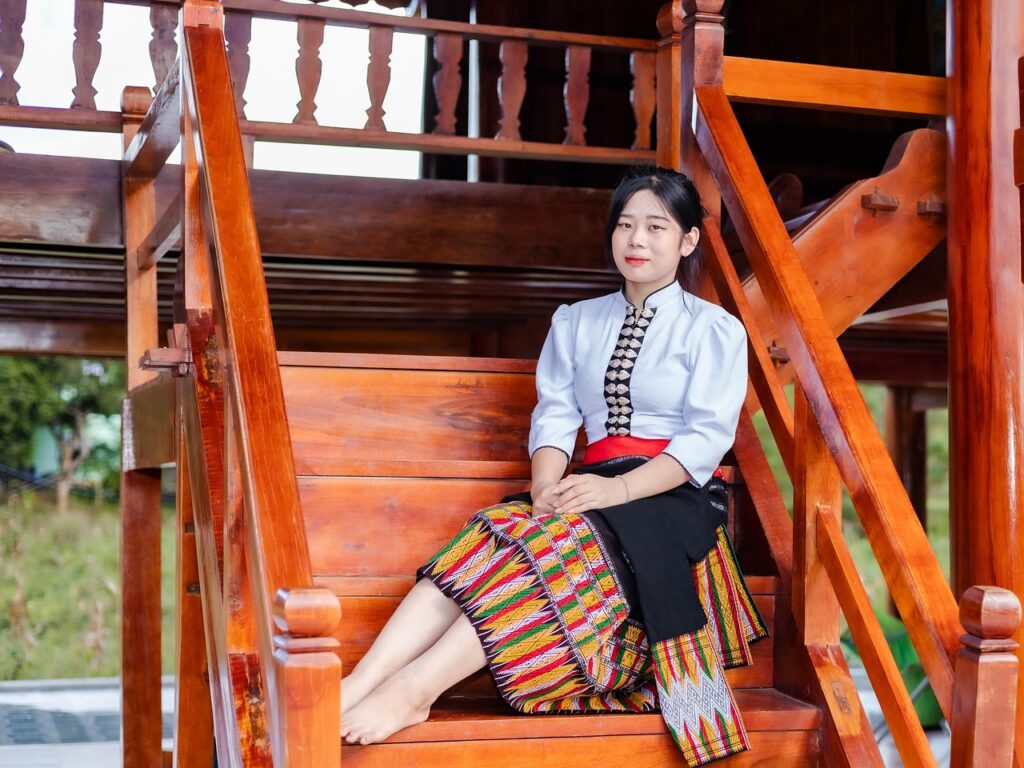
When entering a small street market in Chiang Mai or a temple in Bangkok, a simple greeting immediately opens heart. The first words you talk in Thai are often the key to a friendly exchange and a warm welcome. Greetings and farewells form the foundation for everyday life in Thailand, and with a few basic expressions you can quickly leave a positive impression as a traveler. These small phrases are easy to learn and incredibly effective to build connections.
Let's start with the universal greeting "Sawasdee," which can mean both "hello" and "goodbye." Men say “Sawasdee khrab” while women use “Sawasdee kha” to indicate politeness. This greeting is suitable for any time of day and is appropriate in almost any situation, be it meeting a new acquaintance or leaving a store. Accompanied by a light “Wai” – the traditional gesture with hands placed together in front of the chest – the greeting becomes even more respectful.
If you want to ask about well-being, “Sabai dee mai?” a useful phrase that translates to “Are you okay?” means. The answer is often “Sabai dee,” meaning “I’m fine,” followed by the polite particle “khrab” or “kha.” This short question shows interest in the other person and is a friendly way to start a conversation. If you don't understand someone, "Mai khao jai" ("I don't understand") helps to clarify misunderstandings and ask for further explanations.
To express gratitude is just as important, and there is "Khob Khun", which means "thank you". Supplemented by "Khrab" or "Kha" it becomes "Khob Khun Khrab" or "Khob Khun Kha", which makes the expression even more warm. In response, one often hears "Mai Pen Rai", which means "likes to happen" or "no problem". This phrase reflects the relaxed and harmonious nature of Thai culture and can also be used to downplay small mistakes or inconvenience.
For a polite request or if you want to ask for something, "Kor" is a helpful word that means "please". For example, you can say "Kor nam" for "Water, please" if you order in a restaurant. Another useful phrase is "Kor Thod", which "sorry" or "I'm sorry" and fits in situations in which you accidentally cushion someone or want to ask for attention. These little courtesy phrases show respect and make interactions more pleasant.
If it is time to say goodbye, you can use "Sawasdee Khrab/Kha" again, but "Laa Gon" is also a common way to "look good". It has a somewhat final sound and is often used when you separate for a long time. For a friendly grade, you can add "Phob Gan Mai" what "We see ourselves again" and express hope for a future meeting. These say goodbye leave a positive last impression.
These basic expressions are like a small voice treasure that you can use anywhere in Thailand. Whether you welcome a taxi driver, thank a street seller or say goodbye to a new friend - they help you to express you respectfully and friendly. With a little practice you become a second nature and you will notice how often a simple "Sawasdee" or "Khob Khun" conjures up a smile.
Questions about the way

Navigating through the labyrinth -like tangle of Bangkok's streets or finding a hidden temple in Chiang Mai can be a challenge if you do not master the language. But with a few targeted phrases on Thai, the questions about the path or finding it in a city becomes much easier. These expressions are indispensable for travelers to orientate themselves in unknown terrain and to gain the friendliness of the locals.
A good start to ask for a place is the phrase "____ yoo tea nai?" - What does as much mean as "Where's ____?". You can simply insert the name of the place into the sentence, for example "Wat Pho Yoo Tea Nai?" For "Where's Wat Pho?". Complete the sentence with the polite particle "Khrab" (for men) or "kha" (for women) to look respectful. This simple question often opens the door to helpful answers, even if the directions are sometimes supported by gestures.
If you need a direction or a more precise explanation, "Bai Nai?" - "Where?" - or "tea nai?" - "Where?". These short questions are particularly useful if you want to communicate with a taxi driver or tuk-tuk driver. To ensure that someone can bring you to a certain place, ask "Bai ____ dai may?" - "Can you go to ____?". An example would be "Bai Sukhumvit Dai Mai?" For "Can you go to Sukhumvit?" This wording shows clarity and facilitates communication.
If you got lost and need a general orientation, is "no tea nai?" - "Where am I here?" - A practical phrase to clarify your location. If the answer is too fast or incomprehensible, you can use "Cha Cha Noy" - "Slowly" - ask that the interlocutor speaks more slowly. This polite request is often accepted with understanding, since many Thai countries appreciate it when foreigners strive to speak their language.
Another useful expression is “Kao hawng took dai mai?” – “Can I use the toilet?” Especially in busy cities or markets, this question can be life-saving when you urgently need a break. Just as helpful is “Mee Wifi mai?” – “Do you have wifi?” – to ask for internet access in cafes or accommodations. These little phrases make it easier to communicate basic needs while you're on the go.
If you receive a directional description, terms such as "Kwaa" (right), "Sai" (left), "Trong Pai" (straight ahead) and "Glap" (back) are extremely useful to understand the instructions. These words are often accompanied by gestures, but it helps to know them to avoid misunderstandings. You can also ask "Glai Mai?" - "Is it far?" - to estimate whether you should walk or take a means of transport.
For further helpful phrases and tips for pronunciation, it is worth taking a look at resources such as Tieland to Thailand where many practical expressions for travelers are collected. The examples and explanations of transcription there can help you to find the correct emphasis and to act more safely if you ask for the way.
These phrases are like a compass in your pocket - they give you the opportunity to find your way around in a foreign environment and at the same time show respect for the locals. Even if your pronunciation is not perfect, the effort to speak Thai will often be rewarded with a smile and helpfulness. The more you use these expressions, the more confidently they become, and you will move safely through the streets of Thailand.
Food and Drink
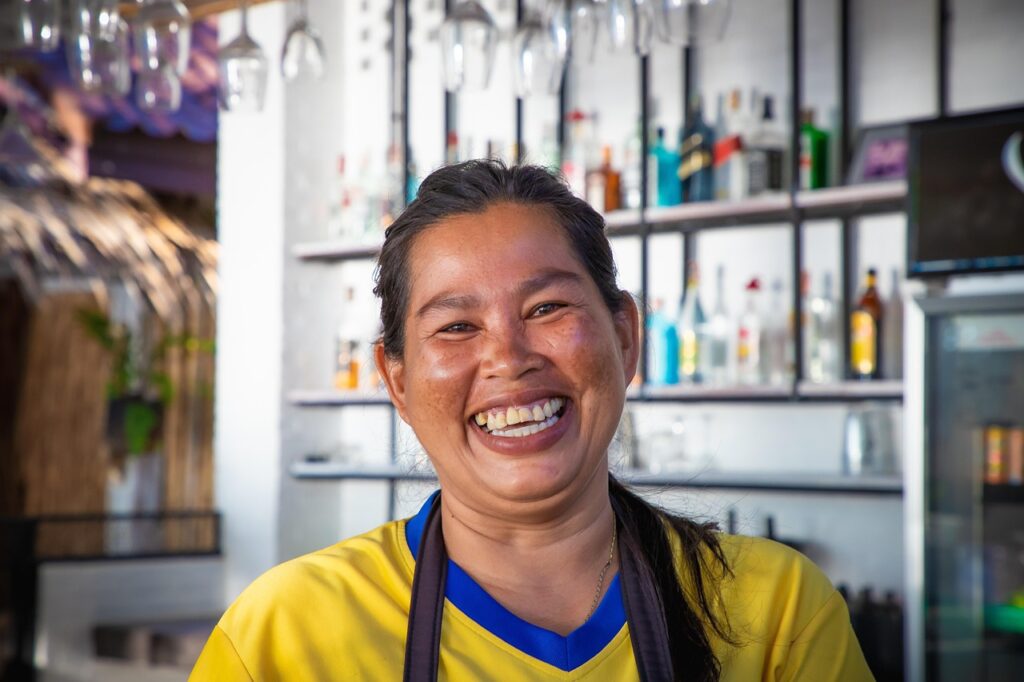
The scent of freshly fried Phat Thai or spicy Tom Yam soup rises in your nose while strolling past a street stand in Bangkok. Culinary experiences are among the highlights of a trip to Thailand, and with the right words you can not only order what your heart desires, but also win the warmth of the sellers or restaurant employees. A few simple phrases on Thai make the difference when it comes to ordering food and drinks, be it in a busy market or a cozy restaurant.
To give up an order, start with "AO" - that means "I want" or "I take". Simply add the name of the court or drink, for example "Ao Phat Thai" for "I want Phat Thai". Complete the sentence with the polite particle "Khrab" (for men) or "kha" (for women) to look respectful. This little gesture shows that you are trying and is often rewarded with a smile. If you are not sure what to order, ask "Mee Arai Baang?" - "What do you have?" - to experience the selection.
For drinks, "Kor Nam" - "Water, please" - is a useful phrase, especially in Thailand's tropical heat. If you want something else, you can say "Kor Nam Som" for "orange juice, please" or "Kor Kaa fae" for "coffee, please". If you want to make sure that your drink is cold, add "yen", ie "Kor Nam Yen" for "cold water, please". These small additives help to get exactly what you want without misunderstandings.
Thai cuisine is known for its variety of flavors, and often you are asked how sharp you want to have your food. If you prefer it, say "Mai Phet" - "not spicy". For a little sharpness, try "Phet Nit Noi" - "A little sharp", and if you are brave, you can say "Phet Mak" - "very sharp". These expressions are particularly helpful for dishes such as Som Tam (sharp papayasalate) or Kaeng (Thai curries), which can be very intensive depending on the region and preparation.
If you have special wishes or cannot eat something, "Mai Ao ____" - "I don't want ____" - is a practical set. For example "Mai Ao Phet" for "I don't want chilis" or "Mai Ao Moo" for "I don't want a pork". This wording helps to clarify allergies or preferences. If you don't know what is included in a court, ask "Mee arai nai?" - "What's in there?" - To ensure that it meets your needs.
If you have eaten and want the bill, say "check" - "the bill, please". It is a direct and polite way to complete the service. Would you like to know the price for a certain dish before you order - especially helpful at streets - question "Uhn nee tao rai?" - "How much does it cost?". This question gives you clarity and helps to avoid surprises. After dinner, you can express your appreciation with "Aroi Mak" - "very tasty" -, which often causes a smile at the cook or waiter.
For a deeper insight into the variety of Thai cuisine and typical dishes that you could order Wikipedia for Thai cuisine a comprehensive overview. There you will find information about popular dishes such as Khao Phat (fried rice) or Phat Kaphrao (fried meat with basil), which you can easily order using the phrases mentioned.
These expressions are like a culinary key that opens the doors to the aromas of Thailand. Whether you order a quick dish at a street or enjoys an extensive meal in a restaurant, they help you to communicate your wishes clearly. With every "AO" and "KOR" you become safer, and the interactions with the locals become an integral part of your travel adventure.
Shopping and negotiating
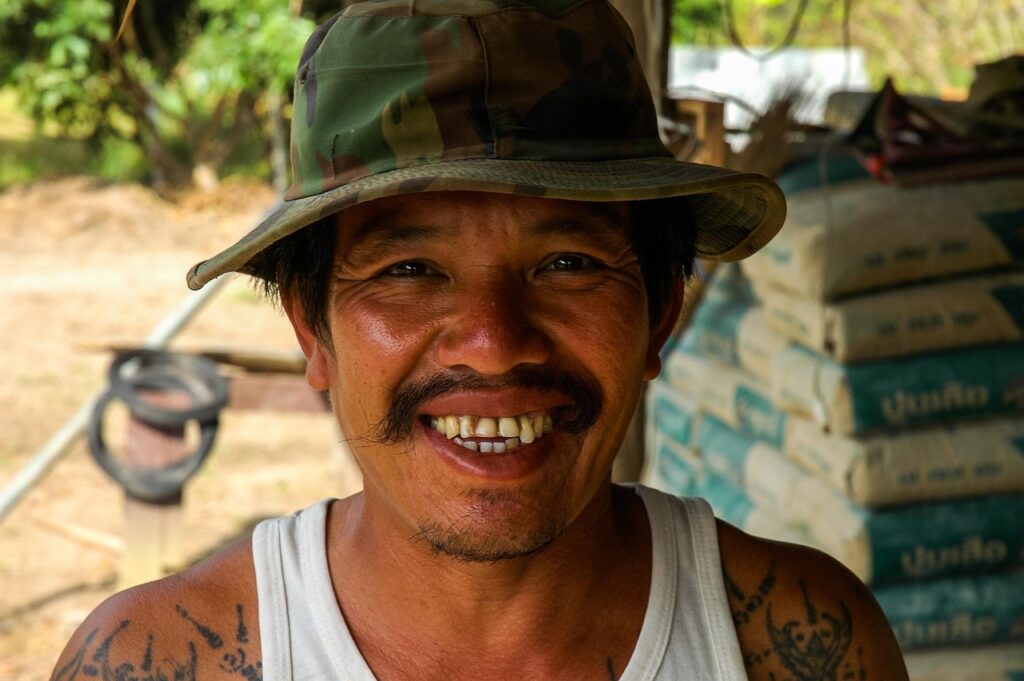
Browsing between colorful bales and glittering souvenirs on a market in Thailand is an experience in itself - but only with the right words does shopping become a real adventure. On the lively bazaars of Bangkok or the night markets from Chiang Mai, you can not only ask about products, but also negotiate prices with a few simple phrases and thus get the best out of your purchase. These sentences are an indispensable tool for travelers to find their way around the world of trade and to interact with the sellers with respect.
To ask for a certain product, start with "Mee ____ May?" - What does as much mean as "Do you have ____?". You can insert the name of the desired article, for example "Mee Suea Mai?" For "Do you have shirts?". Add the polite particles "Khrab" (for men) or "kha" (for women) to make your question friendlier. If you just want to know what there is, "Mee Arai Baang?" - "What do you have?" - to get an overview of the offer.
Inquiring the price is the next step, and “Uhn Nee Tao Rai is suitable for this?” - "How much does it cost?". This phrase is particularly useful in markets where prices are often not signposted. Point to the article you mean or keep it up to avoid misunderstandings. If the price appear too high, you can use "Loht Noy Dai Mai?" - "Can you lower the price?" - politely ask for a discount. This type of hail is common in Thailand in many markets and is often seen as part of the shopping experience.
If you agree with the price and want to buy, say "ao uhn no" - "I take it". This clear statement signals your intention to buy. If you don't like something or don't like it, you can say "Lek like Pai" - "too small" - or "Yai like Pai" - "too big" - to express your concerns. For other problems or if you are looking for something else, "Mai Ao" - "I don't want to" - helps to reject politely without insulting the other person.
Haggling requires a bit of tact, especially in Thai culture where harmony is valued. Always start with a smile and stay friendly, even if the price isn't what you expected. You can make your own price suggestion by saying “____ baht dai mai?” – “Is ____ baht okay?” – and name the desired amount. For example, “Hah sip baht dai mai?” for “Is 50 baht okay?”. This method shows that you want to negotiate without seeming rude.
If you want to learn numbers on Thai to better understand or offer prices, the basic numbers are easy to remember: "Nung" (1), "Sawng" (2), "Sahm" (3), "See" (4), "Hah" (5), "Hohk" (6), "Jet" (7), "Baet" (8), "Gao" (10) (10). For larger amounts such as 100 you say "Nung Roy" and for 1,000 "Nung Pun". These terms help you to quickly record prices or to indicate what is advantageous when having been having an advantage.
For further insights into the art of negotiating and the cultural background you can use resources such as Duden on the importance of negotiation fall back. Even if the focus is on the German language, the principles of polite negotiations are universal and can be transferred to the Thai context. A respectful tone and patience are the key to successful negotiations everywhere.
These phrases are like a small negotiating guide that helps you get the best out in markets and in shops. Whether you are looking for a special souvenir or just do everyday shopping, they give you the opportunity to actively participate in trade. With every "Tao Rai?" And "Loht Noy?" If you become safer, and the interactions with the sellers become an exciting part of your trip.
Transportation and locomotion
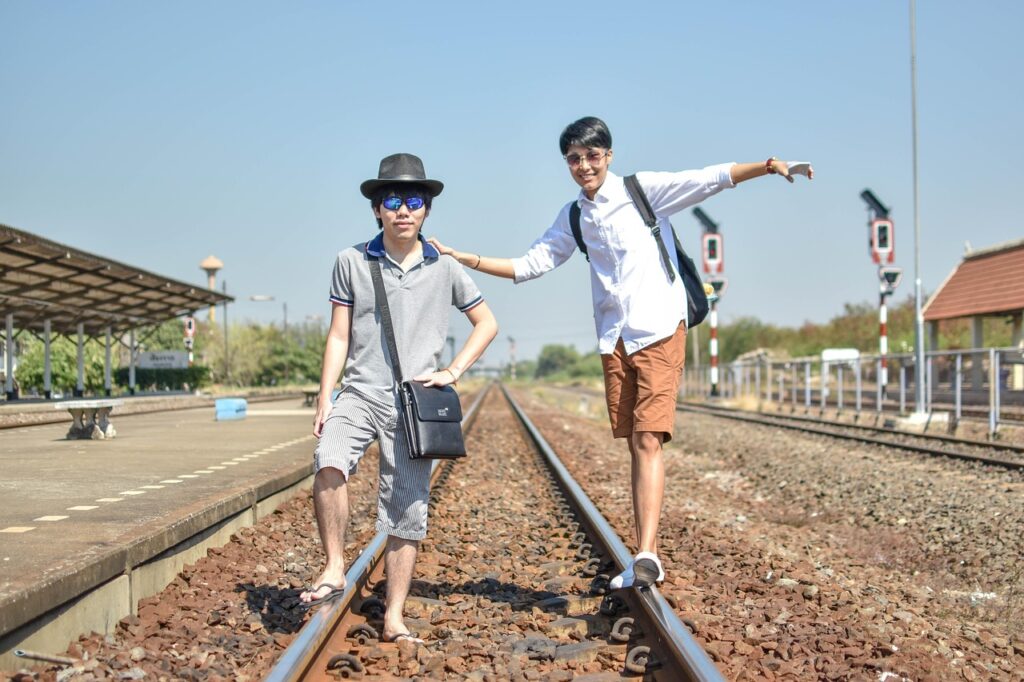
Chug of a tuk tuk or the rattling of the Skytrain trains in Bangkok accompanies you on your way through the pulsating metropolis-but without the right words, the transportation can become a challenge. Whether you want to stop a taxi, buy a ticket for the bus or orientate yourself in the subway, a few targeted phrases on Thai make it easier to use public transport. These expressions help you to achieve your goal and to communicate respectfully with drivers and staff.
To take a taxi or tuk-tuk and share your goal, start with "Bai ____ dai may?" - "Can you go to ____?". Use the name of the place, for example "Bai Siam Paragon Dai Mai?" For "Can you go to Siam Paragon?". Complete the question with "Khrab" (for men) or "kha" (for women) to show courtesy. This wording is direct and helps to clarify the route immediately. If you want to know how much the trip costs, ask "Tao Rai?" - "How much?" - before you enter to avoid surprises.
If you are in a hurry, you can use "Reep Nice Khrab/Kha" - "Please hurry up" - to drive faster. Should you prefer a scenic route or want to drive past a certain point, say "Bai Thang Nee Dai Mai?" - "Can we take this path?" - and point to a card or describe the place. These small sentences give you more control over your journey and make the interaction more pleasant.
When using public transport such as bus or skytrain, "Tea Nai Rot Fai?" - "Where's the train?" - or "Tea nai red bus?" - "Where's the bus?" - helpful to find the right platform or the stop. If you want to buy a ticket, say "KOR TICKET" - "A ticket, please" - and call your goal, if necessary, with "Bai ____" - "to ____". For example "Kor Ticket Bai Asok" for "a ticket to Asok, please". These phrases are simple but effective to find your way around local transport.
To ensure that you enter the right bus or train, ask "Nee Rot Bai ____ May?" - "Does he drive to ____?" - and add your goal. An example would be "no red bai sukhumvit may?" For "does this go to Sukhumvit?". If the timetable or the route is unclear, "Red Ja Bai Mee Krai?" - "When is the next one going?" - to find out about the departure times. These questions minimize the risk of driving in the wrong direction.
If you want to get out, especially in a taxi or tuk-tuk, say "Jot Tee Nee Khrab/Kha"-"Keep here, please". This polite request signals to the driver that you have reached your goal. In public transport, you can ask about the next stop with "Sataan tea na yoo tea nai?" - "Where is the next station?" - to orient yourself. These little hints help you to arrive on time and safely.
For more information about public transport and its structures, you can use resources such as Wikipedia for public transport fall back. Even if the focus is on general concepts, the site offers an insight into the importance of local and long-distance transport that you can apply on your trip in Thailand. Understanding these systems complements language skills and facilitates navigation.
These phrases are like a timetable in your pocket that helps you to move through the Thailand transport network. Whether you are sitting in a crowded bus, steering a taxi through the streets of Bangkok or orienting yourself in the skytrain, they give you the opportunity to communicate your route clearly. With every "Bai" and "Jot" you become safer, and the locomotion becomes a smooth part of your adventure.
Emergencies and help
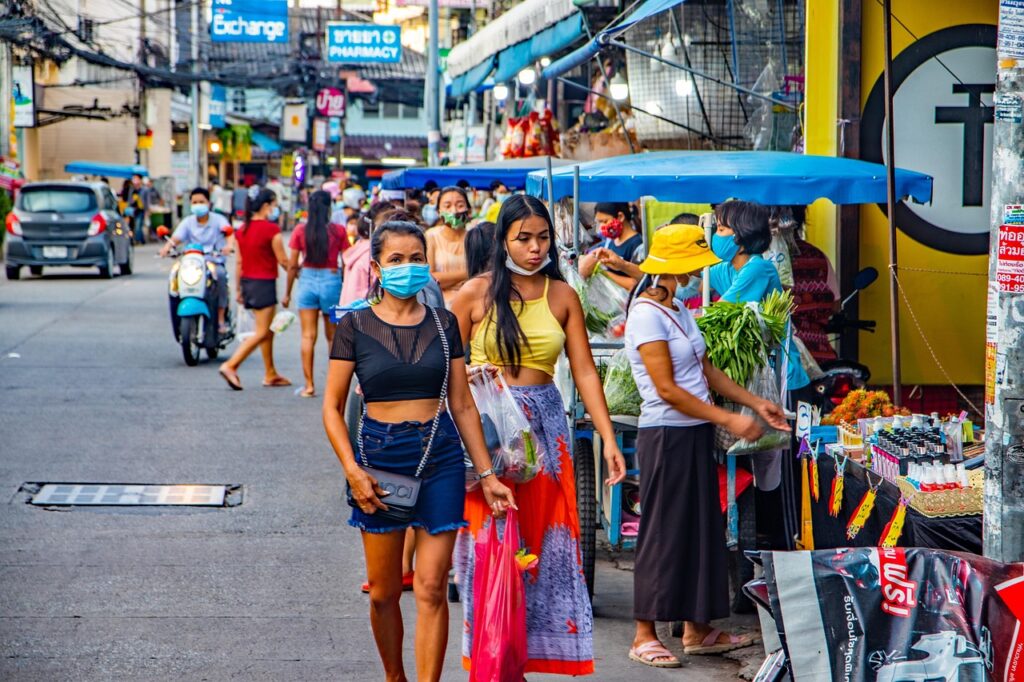
A sudden illness on the beach of Phuket or a lost pass in the streets of Bangkok - such unexpected situations can even turn the best trip upside down. In emergencies, it is crucial to communicate quickly and clearly to get help. With some basic phrases on Thai you can request medical support or address security problems at critical moments, and thus get the support you need while conveying respect and urgency.
To call immediate help, "Chuay Duay!" Is "Chuay Duay!" - "Help, please!" - a powerful expression that attracts attention. Speak it loudly and clearly, especially in an acute situation. If you need medical help, say "Kor Mo" - "I need a doctor" - or "Pai Rong Phayabaan" - "Bring me to the hospital". These sentences signal urgency and help to quickly organize the right support. Complete with "Khrab" (for men) or "kha" (for women) to stay polite, even in stress moments.
If you have pain or symptoms, you can describe them with "Jep Tea ____" - "It hurts here at ____", and call the affected part of the body, for example "Jep Tea Hua" for "It hurts the head". If you feel uncomfortable, "Mai Sabai" - "I am not doing well" - helps to tell your condition. These expressions are simple, but effective to draw the attention of medical staff or passers -by to your problem.
In security issues, such as the theft or loss, "Khun Phom/Khanom Khoy" - "I was robbed" - is an important sentence to explain the situation. If you have lost your passport, say "Passport Hai" - "My pass is lost" - and add "Kor Chuay Duay" - "Please help me" - to ask for support. These phrases are particularly useful if you have to contact the police or other authorities to get help.
To make an emergency call or contact the police, ask "Tea Nai Tamruat?" - "Where's the police?" - or say "Kor Riak Tamruat" - "Please call the police". In Thailand, the emergency number for medical emergencies and other urgent situations are often in 1669 or 191 for the police. It can be helpful to have these numbers at hand, but with the sentences mentioned, you can also request support on site if you have no access to a telephone.
If you are in a dangerous situation and need immediate evacuation or protection, "Kor Pai Tee Bplod Phai" - "Bring me to a safe place" - helps to clarify your request. If you don't understand what happens around you or need further explanations, say "Mai Khao Jai, Chuay Ao" - "I don't understand, please help". These formulations show your emergency and at the same time ask for understanding and support.
For a deeper insight into the definition and dealing with emergencies Wikipedia on the subject of emergencies valuable information. The page describes different types of emergency situations, including medical and security -relevant situations, and provides insights into the rescue chain, which also plays a role in Thailand. This knowledge can complement your preparation and help you act prudently in critical moments.
These phrases are like a life anchor in restless waters that give you security at difficult moments. Whether it is a medical emergency or a security problem, they enable you to communicate quickly and effectively. With every "Chuay Duay" and "Kor Mo" you will be able to ask for help while you rely on the support of people around you.
Cultural peculiarities
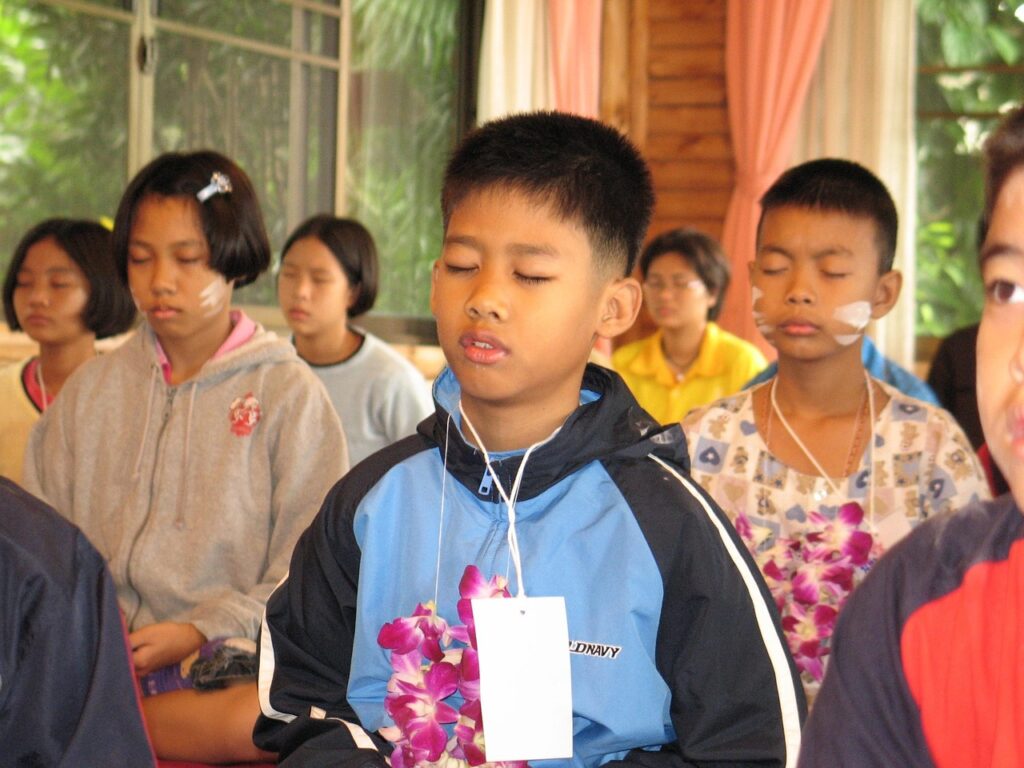
With every word that you speak to Thai, you not only open a door to communication, but also enter a room full of cultural nuances and deeply rooted values. Learning the language is not just about vocabulary and grammar - it is about understanding the soul of Thailand, which is in every sentence, every gesture and smile. A conscious handling of the cultural subtleties when speaking can make the difference between a superficial exchange and a real connection.
A central pillar of Thai culture is respect for hierarchies that is reflected directly in the language. The choice of words depends heavily on the social status, age and relationship with the other. You show that you recognize the social structures with spoilers such as "Khun" for respect persons or "pii" and "nong" for older and younger acquaintances. This sensitivity to rank and relationships is essential to avoid misunderstandings and express appreciation.
Harmony is the focus of Thai life, and this is also evident in language use. Direct confrontation or a clear “no” are often perceived as rude. Instead, Thai people use indirect formulations such as "maybe" or "I think about it" to protect the face of the other person. As a traveler, you should make sure that criticism or rejection and always keep a friendly demeanor, even in difficult situations.
Another cultural element that plays a role in speaking is the meaning of polite particles such as "Khrab" for men and "kha" for women. These small additives at the end of the sentence are more than mere formality - they signal respect and friendliness. Without them, even a well -intentioned statement can work. By consistently using it, you show that you understand and appreciate the Thai way of communication.
The deep roots of Theravada-Buddhism in Thai Society also influences language use. Terms and expressions related to religious practices or respect for monks require special care. For example, if you talk about a temple or spiritual topics, it is important to take a respectful attitude and to consider special language levels such as the monastic language if you interact directly with religious people.
Body language and non -verbal communication are as important in Thailand as spoken words. The "Wai" - the traditional greeting with hands put together - is often an integral part of a conversation and should be accompanied with the right words such as "Sawasdee Khrab/Kha". It is also important to pay attention to gestures that could be considered rude, as showing with the finger or touching the head of a person, since it is considered sacred.
A conscious handling of Thai culture also means recognizing the meaning of "sanuk" - the concept of fun and joy. Thailänder attach great importance to the fact that interactions remain pleasant and light. A smile and a humorous, friendly way when speaking can open doors, even if your language skills are limited. This lightness in dealing is reflected in the language and should be taken into account in your conversations.
For a deeper insight into the cultural aspects that shape communication, offers Wisdom Library on cultural aspects valuable perspectives. The site highlights how traditions, rituals and values influence social interaction, which can also be transferred to Thai culture. This understanding can enrich your conversations and help you better grasp the intricacies of Thai life.
The consideration of these cultural nuances when speaking Thai is like learning an invisible dance - it requires attention and practice, but it makes every interaction more meaningful. By incorporating respect, harmony and friendliness into your words, you are not only understood, but also perceived as someone who appreciates and honors the Thai way of life.
Tips for learning the Thai language
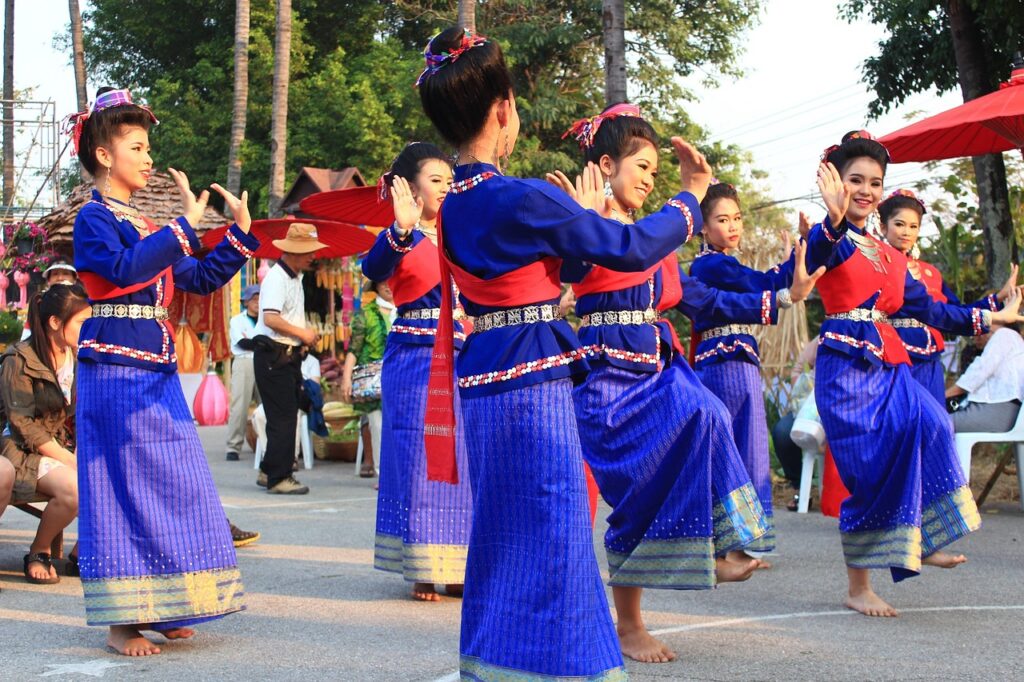
Do you dream of asking you confidently on a Thai market or chatting with a street seller about the price without having to rely on gestures? Learning Thai can lift your travel experience in Thailand to a new level, and with the right strategies and helpful resources, this dream becomes tangible. For travelers who want to deepen their language skills, there are numerous practical approaches that can be used both before and during the trip to master Thailand's melodic language step by step.
A first step to improve your skills is the daily practice of fundamental expressions. Concentrate on everyday phrases such as greetings ("Sawasdee Khrab/Kha"), thanks to thanks ("Khob Khun Khrab/Kha") or simple questions ("Tao Rai?" - "How much?"). Repetition is the key - i.e. the words out loud to get used to the tones, since Thai is a tonal language with five different pitches. Use short, regular exercise units, for example 10 to 15 minutes a day to integrate the learning process into your everyday life.
Listening to native speakers offers an invaluable opportunity to grasp the pronunciation and rhythm of the language. Check out Thai films or series with subtitles to develop a feeling for the sound. Platforms such as YouTube offer numerous videos with everyday dialogues or language lessons that are specially tailored to travelers. Alternatively, you can listen to Thai music - the melodies and texts help to train your ear for the tonality while at the same time absorbing culture.
On -site interactions are one of the most effective methods to make progress. Don't be afraid to speak to locals, be it when ordering a court or asking for the way. Many Thai countries react with patience and joy when foreigners try their language even if mistakes happen. Start with simple sentences and gradually increase. A small notepad or an app with stored phrases can serve as a backup if you get stuck.
Technology can significantly support your learning. Language apps such as Duolingo or Memrise often offer courses for Thai that specifically target beginners and contain interactive exercises on vocabulary and pronunciation. For a comprehensive collection of basic expressions and its translations, a look at it is worthwhile Learn Loecsen Thai. This page offers a variety of phrases for everyday situations, from greeting to practical questions such as "Where are the toilets?" ("Hong Nam Nam Yoo Nai Khrab/Kha?") And helps you prepare you for real scenarios.
Another valuable approach is to carry a pocket dictionary or phrasebook app to look up new words on the go. Such tools are particularly useful when you react spontaneously to situations or want to expand your vocabulary. Additionally, you can join language courses or online communities to get in touch with other learners. Sites like Thai-lernen.de offer not only courses, but also experience reports from learners who show how enriching the learning of Thai - be it for trips or personal relationships.
Setting realistic goals maintains motivation. Instead of concentrating on flowing conversations immediately, work on smaller milestones, such as mastering greetings or ordering in a restaurant. Reward yourself for progress, for example by leading a conversation with a locals and realizing that you are understood. These success experiences give you the drive to continue, even if the tones or the writing initially appear challenging.
After all, it is worth finding language partners before the trip or on site. Tandem apps or local language cafes can combine you with native speakers who are willing to share their language and in return to learn yours. Such encounters not only offer practice, but also insights into the culture that you do not find in any textbook. Every entertainment, every exchange brings you closer to your goal not only to speak Thai, but also to live.
Summary of the useful expressions

Imagine that you stroll through the lively streets of a Thai market, greet a seller with a warm "Sawasdee Khrab/Kha" and ask about the price of a souvenir with a confident "Tao Rai?". The 50 useful expressions that we have compiled in this article are like a practical companion who leads you through everyday travel in Thailand. They cover a variety of situations - from greeting to culinary adventures to emergencies - and help you not only find your way around in the foreign environment, but also to establish real connections.
Let's start with the basics that lay the foundation for every interaction. A simple “Sawasdee khrab/kha” (hello/goodbye) or “Khob khun khrab/kha” (thank you) opens doors and hearts, whether you are entering a store or saying goodbye to a new acquaintance. These polite phrases can be used universally and immediately show respect for your counterpart. Equally useful is “Mai khao jai” (I don’t understand) to clear up misunderstandings when the conversation gets too fast or too complex.
In the area of locomotion, phrases such as "Bai ____ Dai Mai?" (Can you go to ____?) Or "Tea Nai Rot Bus?" (Where is the bus?) Navigation by cities and villages. They are particularly valuable if you take a taxi or use public transport and help you to achieve your goal without detours. Complete with "Tao Rai?" (How much?) To clarify the costs in advance, be it for a tuk tuk trip or a bus ticket.
When shopping and haggling in markets, expressions such as "Uhn Nee Tao Rai?" (How much does that cost?) And "Loht Noy Dai Mai?" (Can you lower the price?). These sentences enable you to actively participate in trade, while you signal your intention to buy with "Ao Uhn Nee" (I take it). They are ideal for purchasing souvenirs or everyday objects and at the same time experiencing the Thai culture of haggling.
Culinary experiences are used to play culinary experiences such as "AO ____" (I want ____) and "Mai Phet" (not sharp). Whether you order Phat Thai on a street stand or ask for cold water in a restaurant ("Kor Nam Yen"), these phrases help you to make your preferences clear. With "Aroi Mak" (very tasty) you can express your appreciation after eating and cause a smile at the cook.
For orientation in unknown areas, questions such as "____ yoo tea nai?" (Where's ____?) Or "Nee Tea Nai?" (Where am I here?) Easy. They support you in finding sights, hotels or toilets ("Hong nam Yoo Nai?") And ensure that you don't get stray. Directions such as "kwaa" (right) or "sai" (left) help to understand directions that give you locals.
In emergencies, sentences such as "Chuay Duay!" (Help, please!) Or "Kor Mo" (I need a doctor) quick support. They are crucial to ask for help in critical moments - be it in the event of illness or security problems. With "Mai Sabai" (I'm not doing well) or "Passport Hai" (my passport is lost) you can describe your situation precisely and request the necessary support.
You can find a helpful resource to deepen them and other expressions Pattayafans on the Thai language. The page offers an overview of basic vocabulary and idioms, including numbers ("nung" for 1, "sip" for 10) and everyday phrases such as "Mai Pen Rai" (does nothing) that are useful in everyday travel. Such sources can expand your repertoire and help you to appear even more safely.
These collected expressions are like a versatile tool set that prepares you in almost every situation in Thailand. They enable you to actively participate in life on site from the first "Sawasdee" to the last farewell with "Laa Gon". The more you use it, the more natural you will feel and you will notice how you enrich your trip by reducing barriers and creating real encounters.
Resources for further learning

With the right tools, your path to mastery of the Thai language can become an exciting journey that goes far beyond the basics. For those who want to immerse themselves deeper into the melodic tones and the cultural subtleties of Thai, there is a wealth of resources that support and enrich learning. From printed books to mobile apps to interactive online courses-the opportunities to deepen your language skills are diverse and tailored to different needs.
A tried and tested introduction to the language are textbooks that have been specially designed for beginners and travelers. A recommended work is “Thai for Beginners” by Benjawan Poomsan Becker, which provides a clear introduction to grammar, vocabulary and pronunciation, including audio CDs to support pitches. Equally useful is Colloquial Thai by John Moore and Saowalak Rodchue, which combines everyday dialogue and cultural references to promote practical speaking. These books are ideal if you want to create a structured basis and like to learn at your own pace.
For those who prefer to be digitally traveling, language apps offer a flexible and interactive way to practice Thai. Duolingo has a Thai course that gives vocabulary and simple sentences in a playful way, while memrise with audio and video clips from native speakers trains pronunciation. Another recommended app is drops that focus on visual learning and introduces new words in short, daily units. These apps adapt to your schedule and are perfect for on the go, be it on the plane or during a break in a Thai café.
If you are looking for a structured learning environment with instructions, online courses are an excellent choice. Platforms like Italki combine you with Thai native speakers for individual lessons that are tailored to your needs - ideal to practice conversation. Udemy also offers courses such as "Thai Language for Travelers" who focus on practical idiosyncrasies for everyday travel. A look at a comprehensive selection of learning materials is worthwhile books.de Where you can not only find textbooks, but also audiobooks and eBooks to Thai, often with reading samples to select the right resource.
Another valuable approach is the use of podcasts and YouTube channels that provide free material. "Thai Pod 101" is a popular podcast that offers lessons for all levels, from beginners to advanced, and often integrated cultural insights. On YouTube you can subscribe to channels such as "Learn Thai with mod", which delivers practical videos with everyday dialogues and pronunciation tips. These audiovisual resources are particularly helpful to sharpen your listening understanding and internalize the tones of the language.
For an immersive experience, it's worth taking on-site language courses in Thailand. Schools like the Walen School in Bangkok or the Pro Language School in Chiang Mai offer intensive courses that often include cultural activities such as temple visits or cooking courses. Such programs allow you to immerse yourself directly in the language and culture while being accompanied by qualified teachers. They are ideal if you are staying in Thailand for a long time and want to improve your skills quickly.
In addition to these main resources, smaller aids can also support the learning process. A handy pocket dictionary, such as the "Thai Phrasebook & Dictionary" by Lonely Planet, is a practical companion for on the go to spontaneously follow words. Online dictionaries such as Glosbe or Thai2english also offer fast translations and example sentences that will help you in real situations. These tools are particularly useful if you want to expand your vocabulary or understand specific expressions.
The combination of books, apps and courses allows you to find a learning style that suits you, be it structured and thoroughly or flexible and mobile. Each of these resources helps to gradually deepen your language skills so that you not only dominate simple phrases, but can also capture the cultural nuances of the language. The way to the flowing Thai may be challenging, but with the right aids it becomes a worthwhile journey full of discoveries.
Sources
- https://de.m.wikipedia.org/wiki/Thail%C3%A4ndische_Sprache
- https://thai-sprachkurs.de/welche-sprache-spricht-man-in-thailand/
- https://de.wikipedia.org/wiki/Thail%C3%A4ndische_Sprache
- https://ling-app.com/de/blog/thailandische-vokale/
- https://de.m.wikipedia.org/wiki/H%C3%B6flichkeitsform
- https://karrierebibel.de/hoeflichkeit/
- https://talkpal.ai/de/deutsche-redewendungen-und-redewendungen/
- https://deutschmitmir21.com/redewendungen-deutsch-alltag/
- https://www.tielandtothailand.com/easy-useful-thai-phrases-words/
- https://www.omniglot.com/language/phrases/thai.php
- https://de.wikipedia.org/wiki/Thail%C3%A4ndische_K%C3%BCche
- https://en.wiktionary.org/wiki/verhandeln
- https://www.duden.de/rechtschreibung/verhandeln
- https://de.m.wikipedia.org/wiki/%C3%96ffentlicher_Verkehr
- https://englishlive.ef.com/de-de/blog/englisch-im-alltag/nutzliche-ausdrucke-um-auf-englisch-ein-taxi-zu-nehmen/
- https://de.wikipedia.org/wiki/Notfall
- https://www.sueddeutsche.de/panorama/notfaelle-hunderte-anrufe-wegen-des-sirenen-fehlalarms-in-hamburg-dpa.urn-newsml-dpa-com-20090101-251006-930-129445
- https://de.wikipedia.org/wiki/Kultur
- https://www.wisdomlib.org/de/concept/kultureller-aspekt
- https://www.loecsen.com/de/lernen-thailandisch
- https://www.thai-lernen.de/
- https://www.pattayafans.de/sprache.htm
- https://thai-sprachkurs.de/die-wichtigsten-vokabeln-auf-thailaendisch/
- https://www.buecher.de/
- https://www.buecher.de/rubrik/start/buch/01/

 Suche
Suche